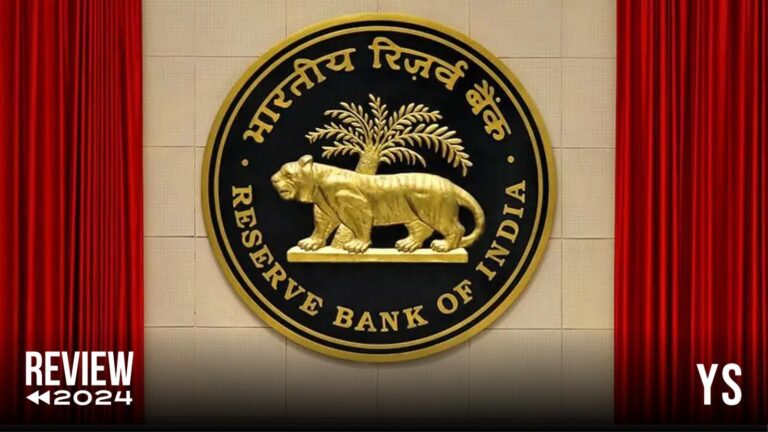The Indian fintech space has become one of the largest ecosystems in the world, bringing many innovations that have made payments and financial services accessible to millions of people.
However, this progress has also been accompanied by considerable challenges. Internet banking and card frauds quadrupled in FY24, according to an annual report by the Reserve Bank of India (RBI).
RBI surveillance reports reveal a staggering 29,082 cases of credit/debit card and internet fraud in the financial year 2023-24, an alarming increase of 334% over the previous financial year , which had reported 6,699 such cases. Clearly, measures to address these issues were urgently needed.
Regulatory crackdowns and their impact
In January, Paytm Payments Bank faced significant regulatory action when it was barred from onboarding new customers and forced to halt all banking services due to failure to comply with Know Your Customer (KYC) standards.
The move had a huge impact on Paytm’s shares, which immediately fell and bottomed at nearly Rs 317 per share in the following months.
“This has created a lot of urgency among fintech players to bring their systems into compliance,” said a fintech investor on condition of anonymity. “It reminds us that compliance is non-negotiable, no matter your size or how many customers are affected.”
The RBI directive also forced Paytm Payments Bank to stop onboarding new UPI customers and freeze major payment services, which had a significant impact on its market position. However, in October, the company received approval from the National Payments Corporation of India to resume UPI registrations, regaining a crucial growth lever.
Since then, Paytm has fully recovered from January’s regulatory setbacks. Its shares, on December 27, were trading at over Rs 990 per share, erasing losses triggered by RBI sanctions earlier this year.
Loans between individuals under surveillance
Paytm was not the only company to face regulatory action. The RBI has revised its framework for non-banking financial companies facilitating peer-to-peer lending (NBFC-P2P) to tackle malpractices and improve transparency in the sector.
The updated regulations prohibit NBFC-P2Ps from assuming any credit risk, directly or indirectly. Previously, platforms were not allowed to provide credit enhancements or guarantees, but the revised guidelines go further, ensuring that lenders bear the full risk of loss of principal and interest.
Startups like LenDenClub and IndiaP2P have quickly adapted to new regulations by introducing updated features and processes. However, other players struggled to adapt. Cred and BharatPe, for example, have suspended all new P2P investments.
Investors have also felt the impact. MobiKwik Xtra, a P2P lending service run by NBFC-P2P Lendbox, previously promised withdrawals at any time. However, following the recommendations of the RBI repressionLendbox has stopped all secondary sales, forcing some investors to wait until 2026 to access their funds.
“This year has been nothing short of transformative for the P2P lending industry,” said Bhavin Patel, founder and CEO of LenDenClub.
“Such regulatory reforms are crucial: they may seem difficult in the short term, but they pave the way for innovation and growth in the long term. These changes are a win-win for everyone: platforms, lenders and borrowers. However, there are some points that are truly restrictive and discourage innovation,” Patel added.
Lending practices criticized
In October, the RBI took action against DMI Finance and Navi Finserv over concerns over their pricing policies. Sources say Navi’s interest rates, which were as high as 35%, were a key point of contention.
Many digital lenders criticized the move, questioning why NBFCs were being targeted while credit card companies charging similar or higher interest rates were left unaffected. They argued that interest rates and charges must already be fully disclosed to customers under an RBI mandate issued in February.
The RBI has lifted restrictions on Navi Finserv earlier this month, enabling the NBFC to resume its loan approval and disbursement activities.
“In an evolving regulatory environment, it will be important for fintechs to balance innovation, implement robust risk management strategies and comply with regulatory guidelines, helping customers build confidence in solutions digital financial services,” said Akshay Mehrotra, co-founder and CEO. , Fibe, a financial technology company.
Autonomy
Although some critics say the RBI’s approach is too authoritarian, it has also paved the way for greater self-government.
In May 2024, the RBI introduced a framework for the establishment of self-regulatory organizations in the fintech sector. The initiative aims to balance innovation with customer protection, data privacy and cybersecurity guarantees while promoting the autonomy of fintech entities.
Self-regulatory organizations should set industry standards, ensure compliance with laws, and act as neutral bodies to resolve disputes within the fintech community. By fostering a culture of accountability and collaboration, the framework encourages fintech companies to voluntarily align with ethical and operational best practices.
On August 28, the RBI announced that the Fintech Association for Consumer Empowerment had been recognized as the first self-regulatory organization for the Indian fintech sector.
“This growth (of the fintech sector) is supported by various regulatory initiatives, with the Fintech Self-Regulatory Organization playing a central role in shaping the sector. This will foster a culture of collaboration between the regulator and industry stakeholders and help improve self-regulation and compliance within the industry,” Mehrotra said.
“Furthermore, this will further create a more transparent ecosystem, ensuring consumer protection. As we move forward, three pillars – self-regulation, risk management and customer education – will remain essential to building a more inclusive, resilient and innovative digital financial system. ecosystem.”

